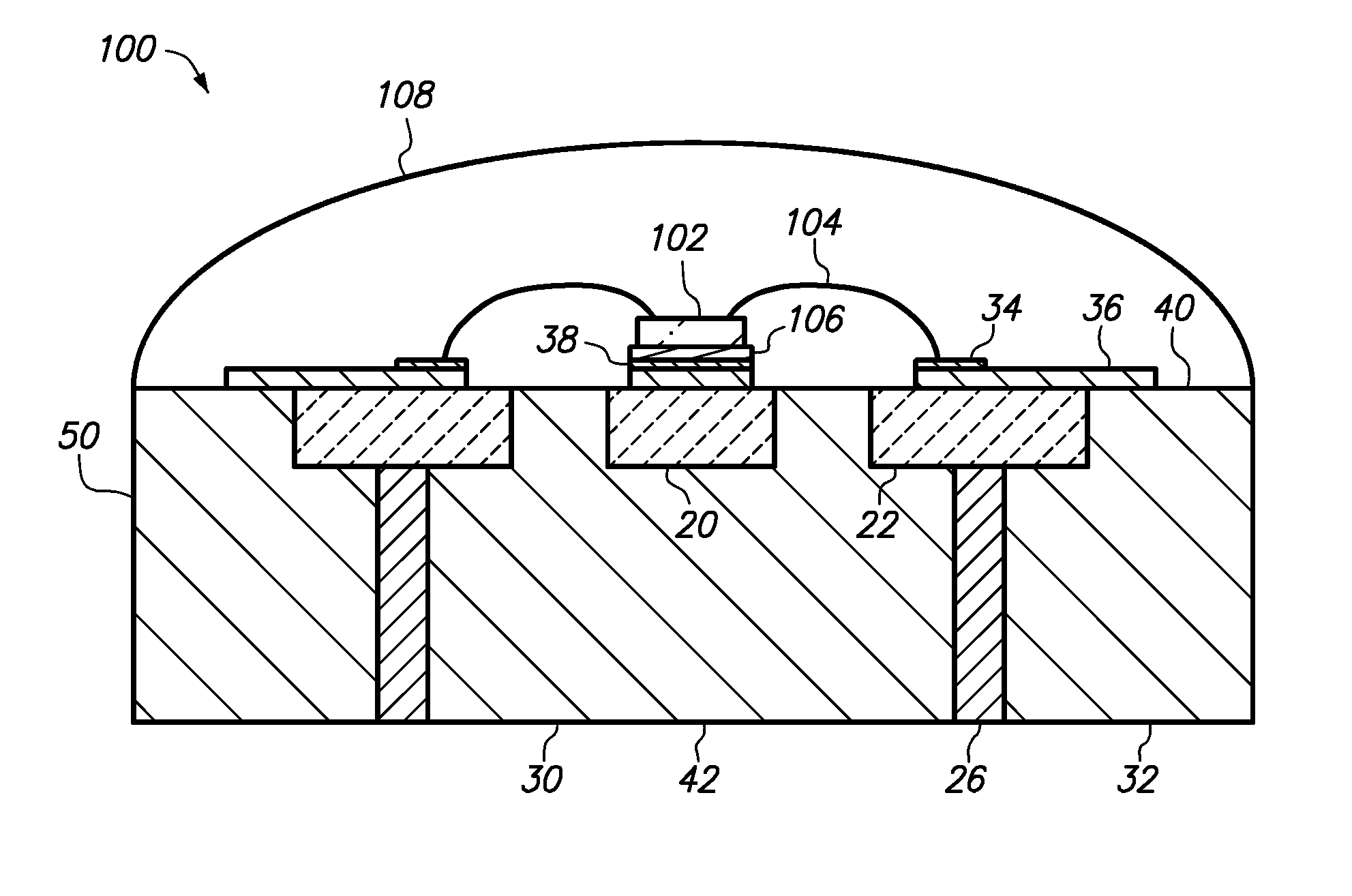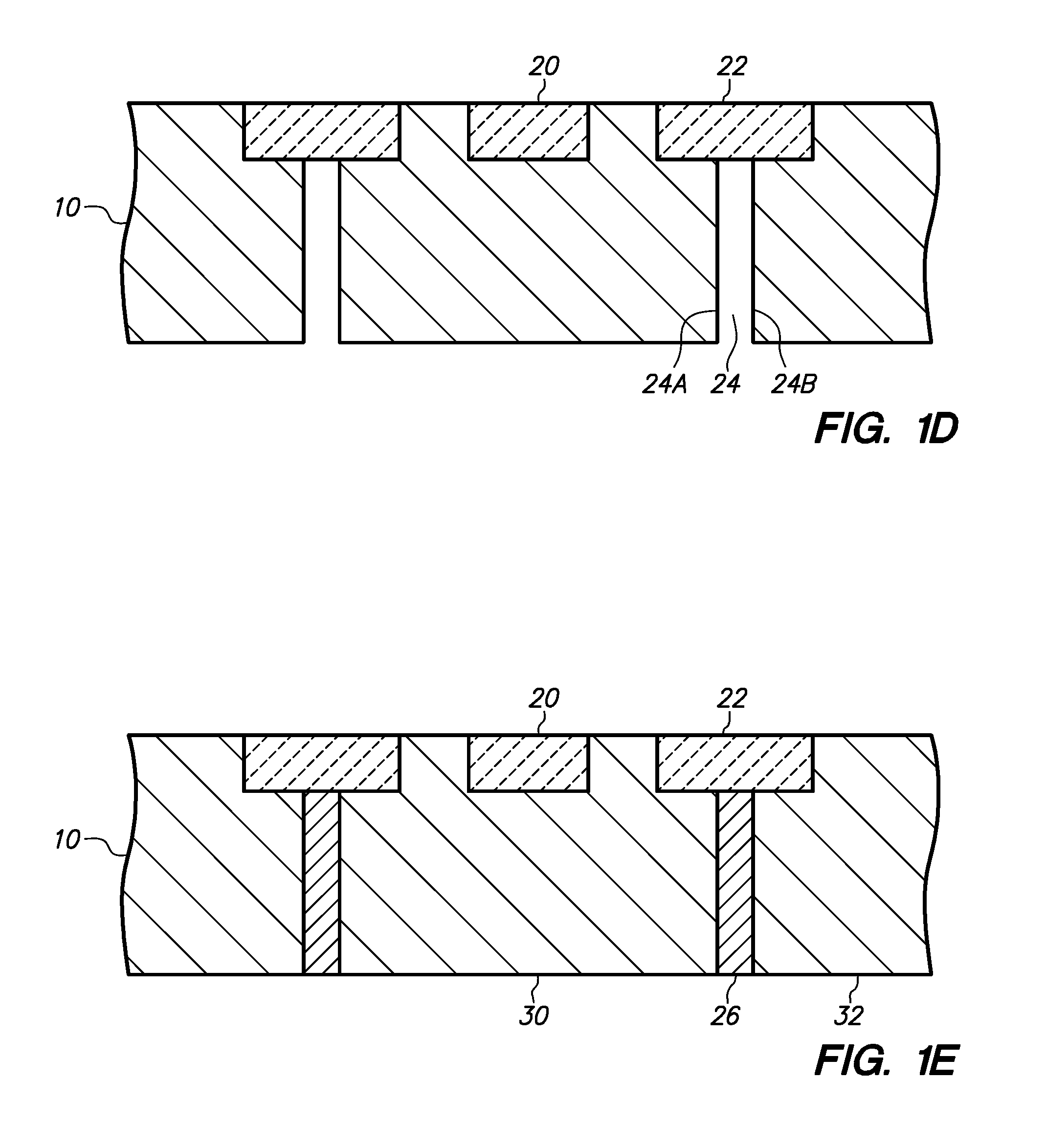Method of making a semiconductor chip assembly with a ceramic/metal substrate
a technology of ceramic/metal substrate and semiconductor chip, which is applied in the direction of semiconductor devices, semiconductor/solid-state device details, electrical devices, etc., can solve the problems of heat not only degrading the chip, short life span and immediate failure of the semiconductor device at high operating temperature, and easy degradation of the chip performance. , to achieve the effect of excellent heat spreading and heat dissipation, low cost and low thermal conductivity
- Summary
- Abstract
- Description
- Claims
- Application Information
AI Technical Summary
Benefits of technology
Problems solved by technology
Method used
Image
Examples
Embodiment Construction
[0049]FIGS. 1A-1H are cross-sectional views showing a method of making a substrate with a ceramic block in the base and another ceramic block in the base and the terminal in accordance with an embodiment of the present invention, and FIGS. 1I and 1J are top and bottom views, respectively, corresponding to FIG. 1H.
[0050]FIG. 1A is a cross-sectional view of metal plate 10 which includes top surface 12 and bottom surface 14. Metal plate 10 is copper and has a thickness of 2000 microns.
[0051]FIG. 1B is a cross-sectional view of cavities 16 and 18 in metal plate 10. Cavities 16 and 18 extend into metal plate 10 at top surface 12, are spaced from bottom surface 14 and face in the upward direction and have a depth of 750 microns.
[0052]Cavities 16 and 18 are formed using an etch mask on top surface 12 and a cover mask on bottom surface 14. The etch mask and the cover mask are photoresist layers deposited on metal plate 10 by dry film lamination although wet spin coating and curtain coating ...
PUM
| Property | Measurement | Unit |
|---|---|---|
| thickness | aaaaa | aaaaa |
| depth | aaaaa | aaaaa |
| pH | aaaaa | aaaaa |
Abstract
Description
Claims
Application Information
 Login to View More
Login to View More - R&D
- Intellectual Property
- Life Sciences
- Materials
- Tech Scout
- Unparalleled Data Quality
- Higher Quality Content
- 60% Fewer Hallucinations
Browse by: Latest US Patents, China's latest patents, Technical Efficacy Thesaurus, Application Domain, Technology Topic, Popular Technical Reports.
© 2025 PatSnap. All rights reserved.Legal|Privacy policy|Modern Slavery Act Transparency Statement|Sitemap|About US| Contact US: help@patsnap.com



